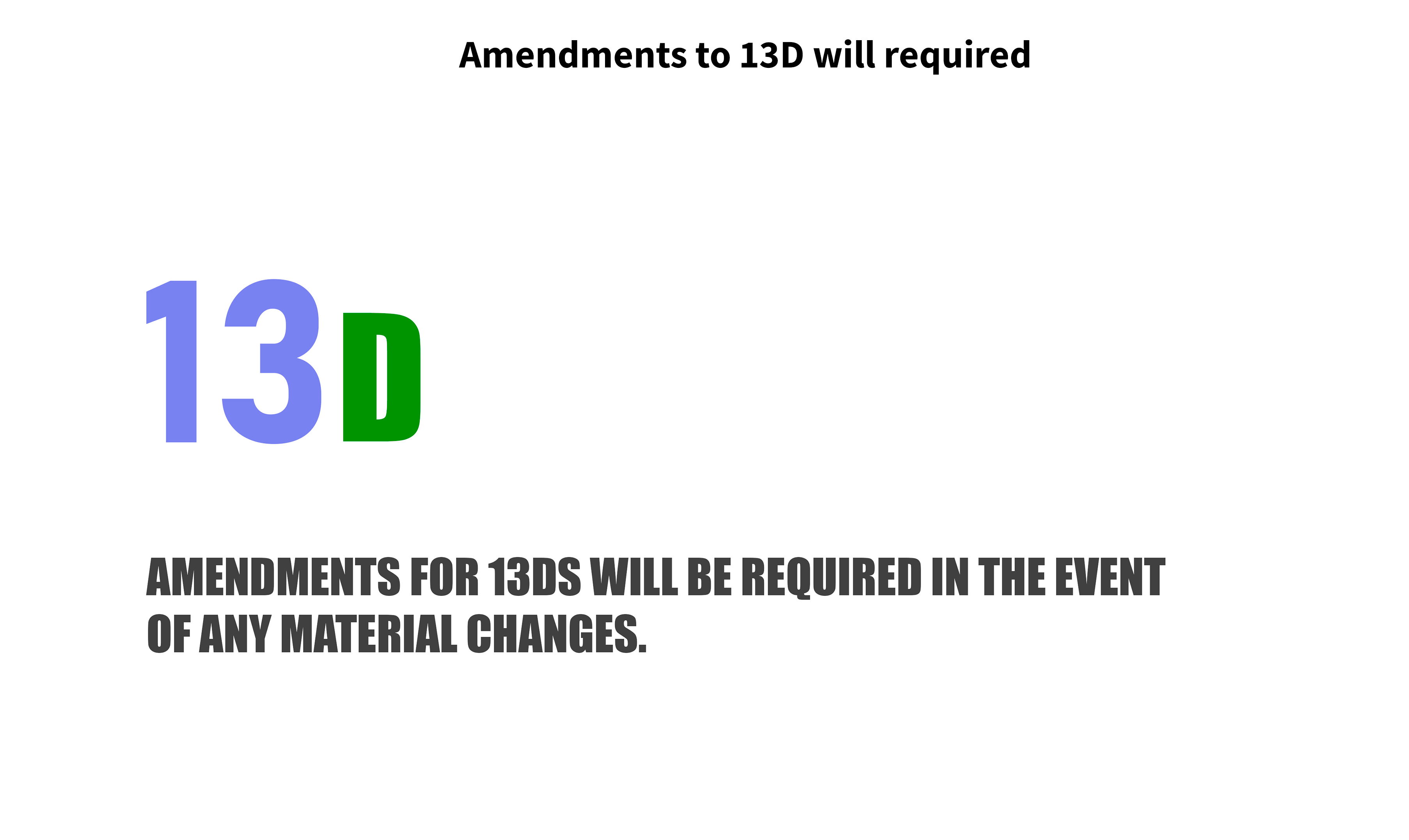There are numerous filings that you will deal with consistently. The most common are 13Fs, 13Ds, and 13Gs. All institutional investment managers with qualifying assets of more than $100 million must submit a 13F to the Securities and Exchange Commission (SEC) every quarter. They conduct business by using the U.S. postal service and other instruments of interstate trade. These filings are only mandatory for firms with significant US business investments. Many international investment firms do not file 13Fs.
The cutoff for 13F filings is 45 days post-quarter-end. If the end of the quarter was March 31st, a 13F is not required to be filed with the SEC until May 15th, at the latest. As you track your client, you will notice some firms will file far before the 45-day due date, while others, specifically many hedge funds, will typically wait until the last minute to file. Within a 13F filing, a manager must report the following for each security.

The 13F filings can be found on the SEC's website each quarter. This list generally includes a 13G filing. It is required whenever an investment firm acquires 5% or more of a voting class of a company's stock with no intention of changing or influencing control over the issuer or company.

Within 45 days after the calendar year's end when the investor surpasses the 5% barrier, a filing must be made. Therefore, if an investment firm takes a 5% or more stake in a public company with a passive stance to management, and takes that stake in March, it will have nearly nine full months before it will need to file its 13Gs. However, once a 13G is filed, the company will have to file amendments in three situations.

The first is to update the firm's current ownership on an annual basis.

Second, the firm must file an amended 13G within 10 days of the end of each month in which the investment firm owns more than 10% of the public corporation.

Finally, and most importantly, any time the firm's ownership increases by at least 5%, it must file an amended 13G within 10 days of the end of the month.

While disclosure of fixed-income ownership is not required, a 13D filing is required whenever an investment firm acquires beneficial ownership of 5% or more of a company's voting class with the intent of changing or influencing control over the issuer.

However, any investment firm must file a 13D if they acquire more than a 20% stake in a public company, regardless of their intentions.

In either case, the filing must be completed within 10 days of the purchase. The 13D filing will require detailed disclosures, including information about the investor's background, the reason for purchasing the stock, and the arrangements made with the issuer.

If there are any significant changes, amendments to 13D will be required.

An easy way to remember the difference between a 13G and a 13D is that 13G stands for Good, and 13D stands for Danger. This is something to keep an eye out for.

Key Takeaways:
1. Institutional investment managers with qualifying assets of more than $100 million must submit a 13F to the SEC every quarter.
2. Whenever an investment firm acquires 5% or more of a voting class of a company's stock with no intention of altering or impacting control over the issuer or company, a 13G filing is necessary.
3. Whenever an investment firm acquires beneficial ownership of 5% or more of a company's voting class with the aim of altering or impacting the control of the issuer, a 13D filing is necessary.
4. 13D must be finished within a period of 10 days after the purchase.
5. An easy way to remember the difference between a 13G and a 13D is that 13G stands for good, and 13D stands for danger.



